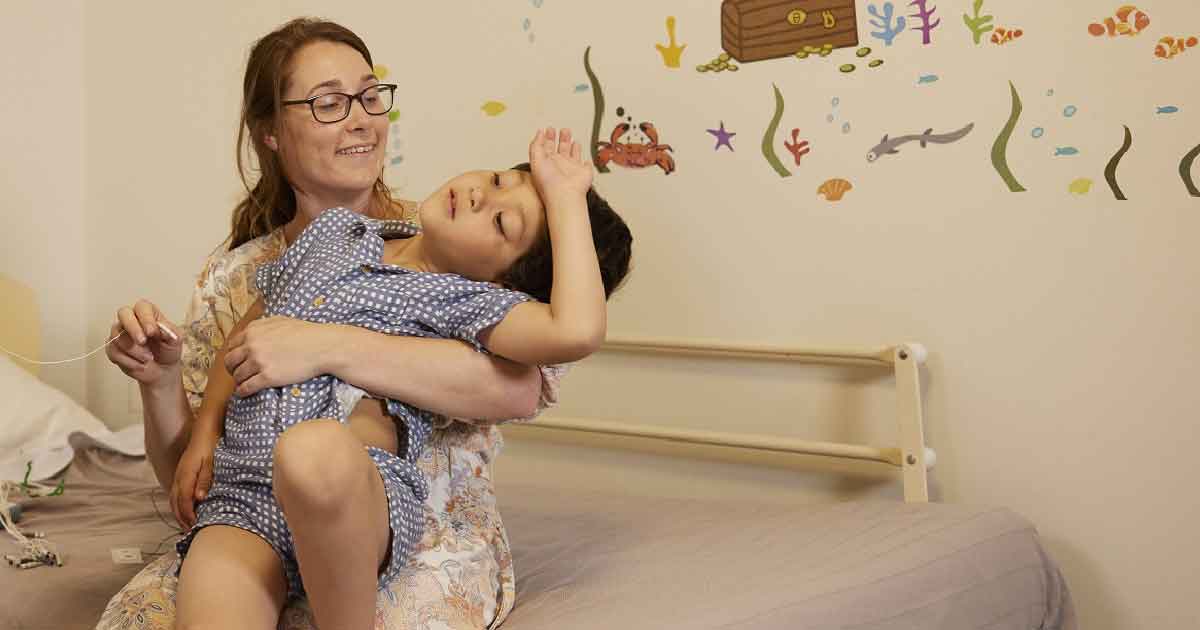The Woolcock Institute of Medical Research

Will we ever sleep again?
“Will we ever sleep again?”. It’s a common refrain for young families and, for some, the “new parent fog” can last for years affecting the whole family’s health and happiness. So, what is a normal sleep pattern for preschool children? And how do you know when it’s time to get help?
Knowing when to get help is important. The physical growth of children with sleep disorders can suffer as can their learning and speech development. Yet studies have found that just five percent of children with sleep problems are ever assessed by their family doctor, even fewer by sleep specialists.
Dr Chris Seton, a paediatric sleep specialist at the Woolcock Institute of Medical Research, says toddlers and preschoolers need 10 to 14 hours’ sleep a day and primary school-aged children 9 to 11 hours.
He says the two red flags to look out for are how long it takes your child to get to sleep and how often they wake during the night.
If it’s taking 20-25 minutes to settle your toddler or preschooler at night or they’re waking once during the night, that is normal. Night-waking, however, can have a profound effect as they can become excited, very wakeful and take a long time to get back to Rapid Eye Movement (REM) sleep. Early morning waking is usually a normal part of life with young children.
Some of the common problems Dr Seton sees at the Woolcock Clinic are sleep onset dependency, night terrors and obstructive sleep apnea (OSA).
Want to stay up to date with our research on sleep conditions?
Sign up to our monthly newsletter
SLEEP ONSET DEPENDENCIES
There are no hard and fast rules when it comes to getting your toddler or preschooler to sleep. Solutions for sleep onset dependence need to be tailored to the child and the family, but consistency is key.
Reassurance is important for children who may be suffering separation anxiety. Sleep onset dependence should be dealt with in a gentle way, with one option being to set up a chair in the room and stay there until your child is asleep. Then as they begin to feel more confident, gradually withdraw.
A predictable bedtime routine is important. Do the same things every night, in the same order and create the same environment. Keep it boring.
Another technique is to make bedtime coincide with lights out. Do all your pre-bed routine away from the bedroom, then leave your child to get themselves to sleep.
Co-sleeping can be an option for some families, as long as this is consistent with the sleep and mental health needs of both parents and the child. Parents’ sleep is important too.
NIGHT TERRORS
Night terrors are one of a group of sleep disorders called parasomnias which includes sleep walking and talking, teeth grinding, and some forms of bed wetting.
Night terrors are most common in children under the age of seven. They typically consist of bursts of ear-piercing screaming and crying, usually 1 to 2 hours into sleep. Children will not respond to reassurance during an episode.
It’s important to know that they are deeply asleep, not in pain and not having a nightmare.
Mostly, night terrors are of short duration, but occasionally they last 20 minutes or more. They increase in frequency during hot weather, if a child has a fever, or if a child is sleep deprived.
SNORING AND OBSTRUCTIVE SLEEP APNEA (OSA)
Around five percent of toddlers and preschoolers snore regularly during sleep.
Snoring is a sign of restricted airflow in part of the upper airway. In most cases this is due to enlargement of the tonsils and/or adenoids, but in some cases the snoring may be cause by OSA.
OSA means that, during deep sleep, there are repetitive short pauses in breathing that reflect air tube blockage, which deprives the child of oxygen and disrupts their sleep.
FIND OUT MORE
There’s advice from Dr Chris Seton and other paediatric sleep specialists on Maggie Dent’s Parental as Anything podcast, Winning the Sleep Wars.
Most sleep problems can be treated and either cured or managed by a doctor or sleep specialist. To find out more, go to www.woolcock.org.au/clinic.










